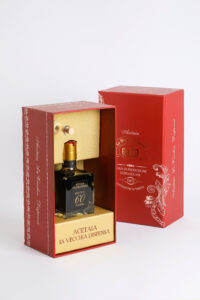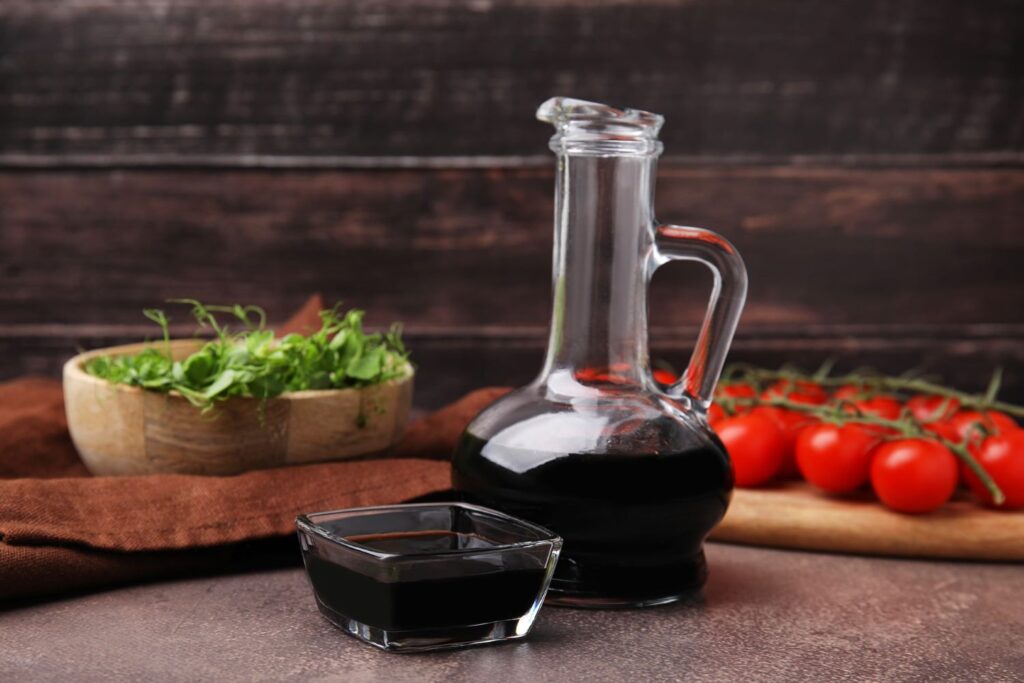Spending time around a table with the people you love most is one of life’s greatest joys. For those who follow a gluten-free diet, however, it is essential to know whether products such as Balsamic Vinegar of Modena in all its variations and its derivatives are safe for consumption. No less important is also the attention of other diners in following small rules in order to avoid cross-contamination that could cause problems for celiac diners.
“La Vecchia Dispensa” is committed to providing clarity on its products, providing interested parties with all the necessary information and giving advice on how to guarantee the preparation of gluten-free dishes without risks of contamination.
Balsamic Vinegar: Gluten Free or Not?
Balsamic Vinegar is traditionally obtained from cooked grape must, which gets fermented and then aged in wooden barrels. This process does not include other additions and therefore Balsamic Vinegar is considered naturally gluten-free. However, you must pay attention when purchasing products “based on” or “containing” Balsamic Vinegar, for the addition of other ingredients could make the product unsuitable for all gluten-intolerant individuals.
In particular, the Italian Celiac Association (AIC) reports on its official website that “the Traditional Balsamic Vinegar of Modena DOP, the Traditional Balsamic Vinegar of Reggio Emilia, the Balsamic Vinegar of Modena IGP and the non-DOP and non-IGP Balsamic Condiments, if they consist only of cooked grape must, wine vinegar and sulphites, can be consumed by celiacs.” More specifically, however, they indicate that “in the preparation of flavored vinegars and balsamic condiments, the possible use of complex substances (additives, flavourings, adjuvants, colourants) is foreseen, the composition of which and the consequent possible suitability for celiacs require specific evaluations: therefore the suitability for consumption must be verified.”
In other words, this means that products such as Balsamic Vinegar Cream or Balsamic Vinegar Chocolates are to be considered products in doubt, which should feature the wording “gluten-free” or the crossed-out ear of wheat mark. Otherwise it would be advisable to contact the manufacturer to ensure the actual safety of consumption by a celiac.

Avoid Gluten Contamination in the Kitchen: 5 Useful Tips
By following these tips and being careful when choosing ingredients, you can create a safe, gluten-free kitchen environment for you and your guests. In addition to using only gluten-free products, however, it is important to adopt safe practices to avoid cross-contamination.
Let’s find out together how to make a meal safe for a celiac:
- Keep Utensils Separate. In each session, use kitchen utensils dedicated exclusively to gluten-free foods to avoid contact with contaminated food. For example, use different cutting boards, wooden spoons and colanders for gluten-free foods.
- Thorough Cleaning. Be sure to thoroughly clean work surfaces, utensils and cookware before preparing gluten-free foods. Use the dishwasher or hot water and detergent to remove any traces of gluten.
- Be Careful of Ingredients. Read packaged food labels carefully to identify any ingredients that may contain gluten, such as wheat flour, wheat starch or malt.
- Food Separation. Store gluten-free products in separate containers from gluten-containing foods in the refrigerator and pantry cupboard to avoid cross-contamination.
- Choose Certified Products. When possible, opt for certified gluten-free products, which have undergone rigorous checks to ensure their safety and compliance with regulations.



















